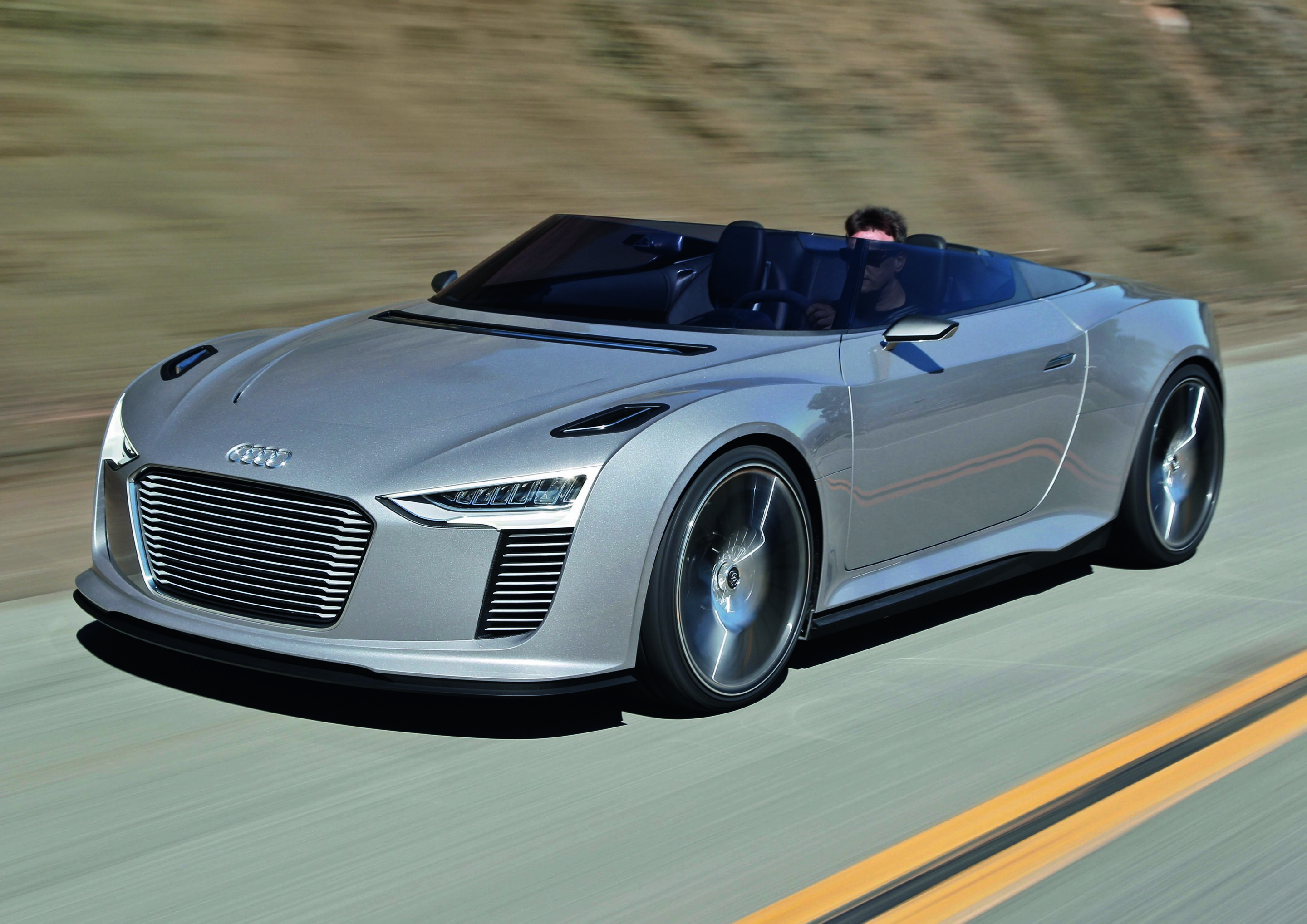Search
All results
(378)
MediaInfos
(138)
News
(1)
BasicInfos
(5)
Press kits
(2)
Images
(52)
Videos
(4)
Publications
(16)
 Audi e-tron Spyder
Audi e-tron Spyder
All light units use ultra-efficient LED technology. As with the R8 and the e-tron sports car concept cars, the trademark four rings are located above the single-frame. Beneath the trademark is the charging station for the batteries. The rings disappear beneath the front hatch, exposing not just the charging plug but also a display showing the charge state and a map graphic indicating the current electric range. Another distinctive feature of this show car are the 20-inch wheels, that take the blade design of the first e-tron show car and refine it into a three-dimensional turbine design. The wheels combine the lightweight materials aluminum and carbon into a design that is both visually pleasing and very effective aerodynamically. The 66 individual components comprising each individual wheel of the e-tron Spyder are indicative of just how complex they are. The flanks sport familiar contours in a new form. Unusually sharply defined edges frame the smooth side surfaces while simultaneously separating horizontal from vertical areas. The shoulder line frames the lines of the strongly contoured wheel wells even more distinctly than in the Audi R8 and combines them with the upper edge of the vehicle body. Particularly when viewed from the back, the e-tron Spyder appears even more pronouncedly horizontal and more strongly oriented toward the road. An impression that is also created by the characteristic sills with a new cut and is picked up by the spoiler and diffuser at the front and rear of the car. Carbon elements borrow from motor sports to set special accents here as well. Carbon is also used on the engine cover in the rear and in license plate and lighting frame, which also includes the air outlets below the lateral light units. The contrast of materials is reminiscent of a race car. The essential functional elements of the chassis and the vehicle body are done in carbon, while the body as a cover sports a classic paint finish.